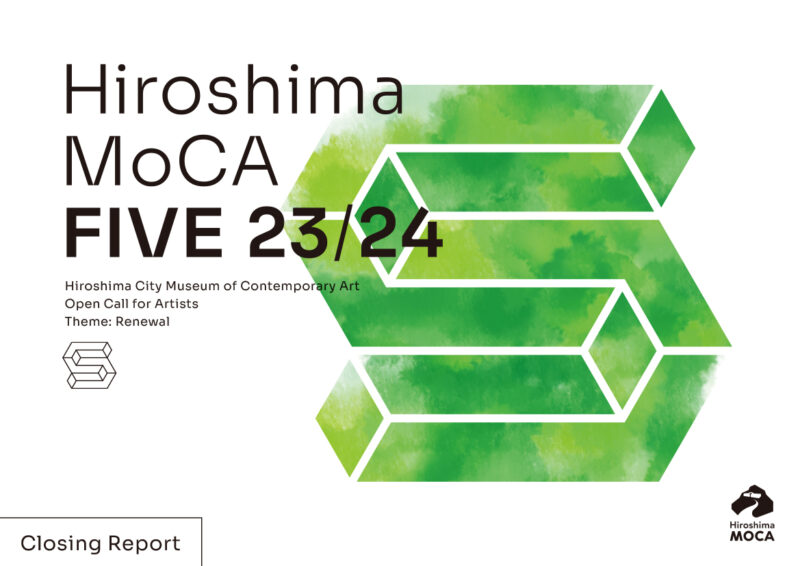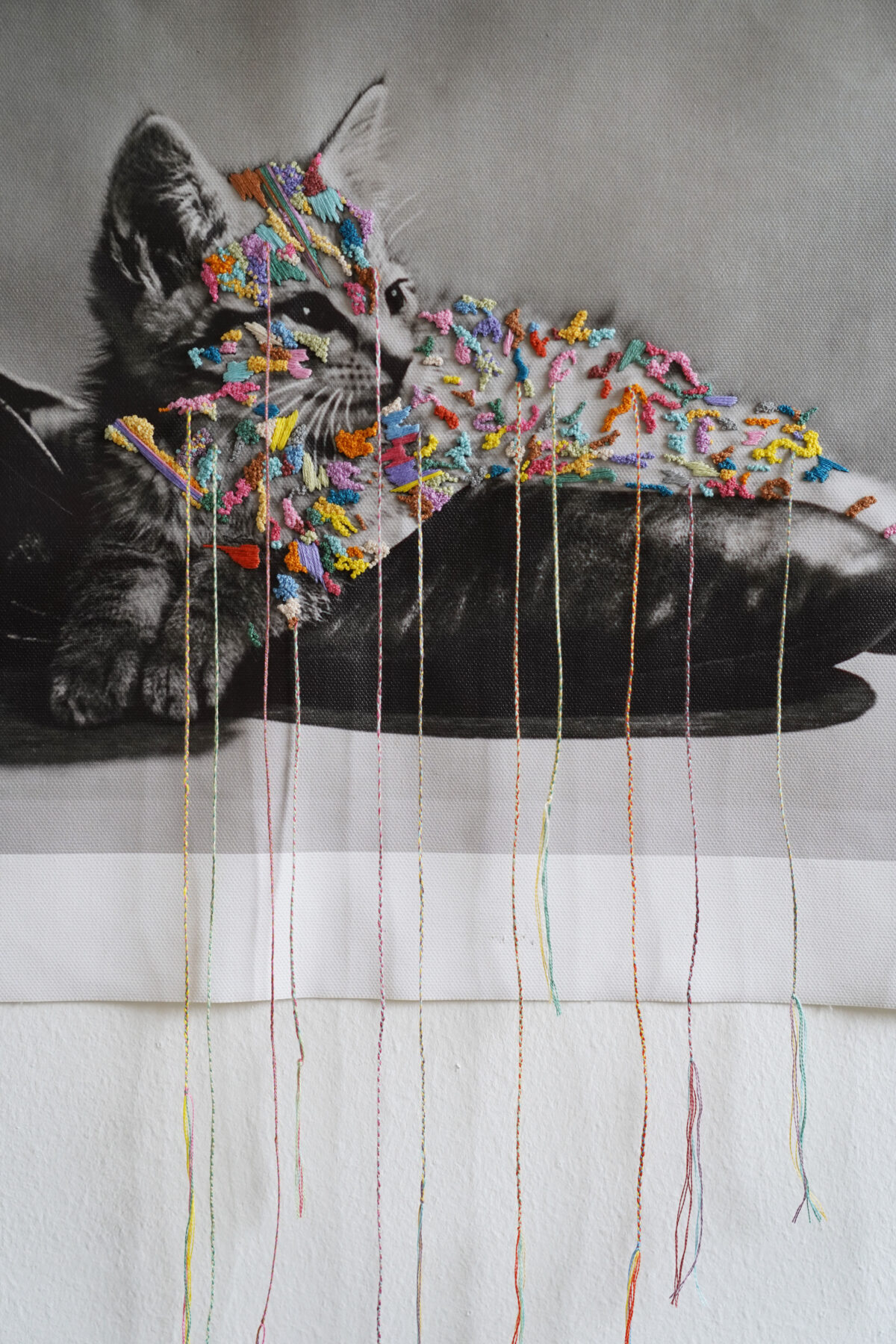
Urakami Mana, Tie while floating, detail, 2024
Urakami Mana
Tie while floating
This work is a continuation of a series I have been working on since 2017, with the theme of “the third time in one’s life.” It appropriates and repurposes old photographs found at flea markets, drawing attention to the natural patterns of the subjects and the scenery and expressions captured on film. There is a saying that people die twice: once physically, and once again when they are forgotten. My aim in these works is to breathe a third life into these completely forgotten photos (memories) by embellishing them with embroidery by hand, in hopes that they will become part of someone’s memory once more.
The theme of this open-call exhibition, “Renewal,” resonates with my own artistic concept of revival and rebirth, and what has emerged is a space in which new perspectives on and reinterpretations of the past can be shared and explored. The threads, tied while floating, are a rainbow of intermingled colors that symbolize diverse values, ideas, and concepts, surrendering themselves to the natural flow of things. Viewers are invited to examine them up close, touch them gently, and immerse themselves in the experience.
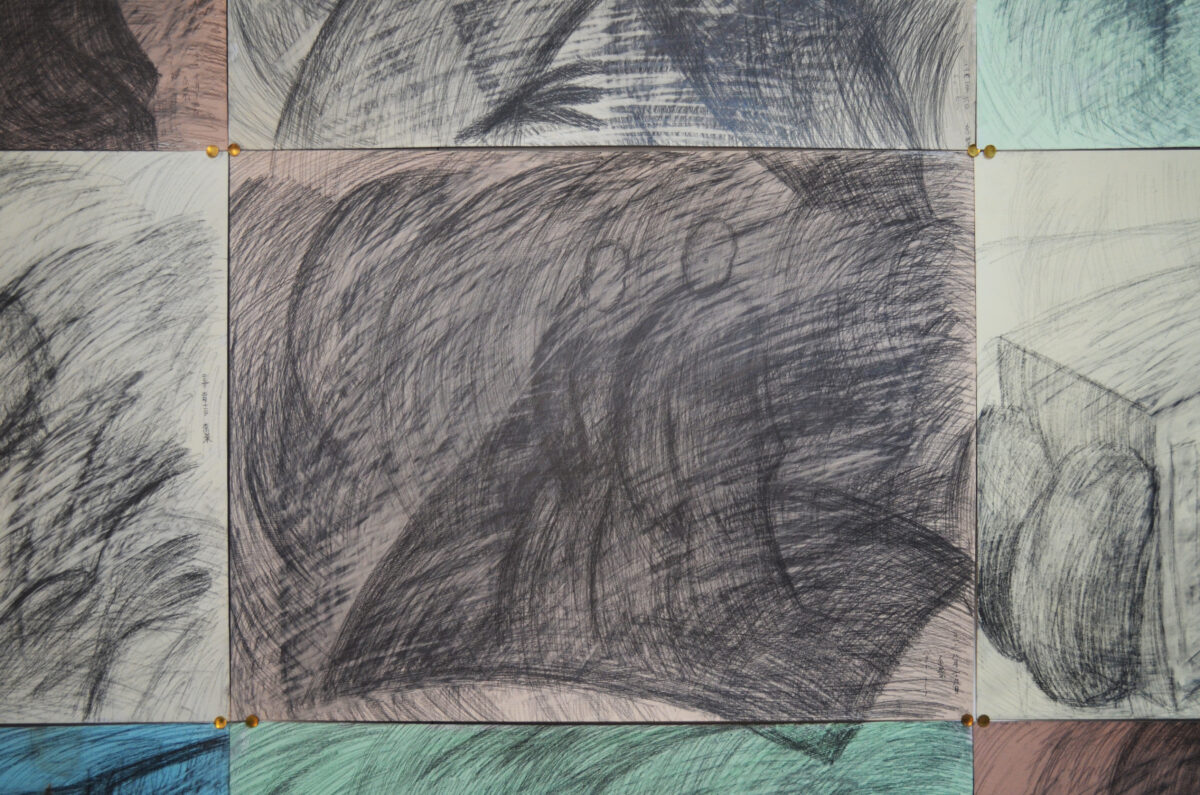
Tsugawa Nana, Better life, detail, 2024
Tsugawa Nana
Better life
Hiroshima was historically Japan’s leading prefecture for emigration. Due to heavy taxation following land reforms, crop failures, and a severe shortage of arable land for its increasing population, many Hiroshima residents chose to emigrate to Hawaii where they could earn a better living working on sugarcane plantations. One of my relatives was apparently among them, although he did return to Japan. After his arrival back in Hiroshima, he single-handedly dug a small tunnel. This tunnel made it easier for local residents to get from point A to point B, and earned him their gratitude.
I believe that reflecting on the experiences and attitudes of past Japanese émigrés will lead us to rethink our views on the immigration issues Japan faces today. This work draws inspiration from the scenery that comes into view upon emerging from a tunnel, and the experiences of those who carve out a life for themselves as immigrants in an unfamiliar land.
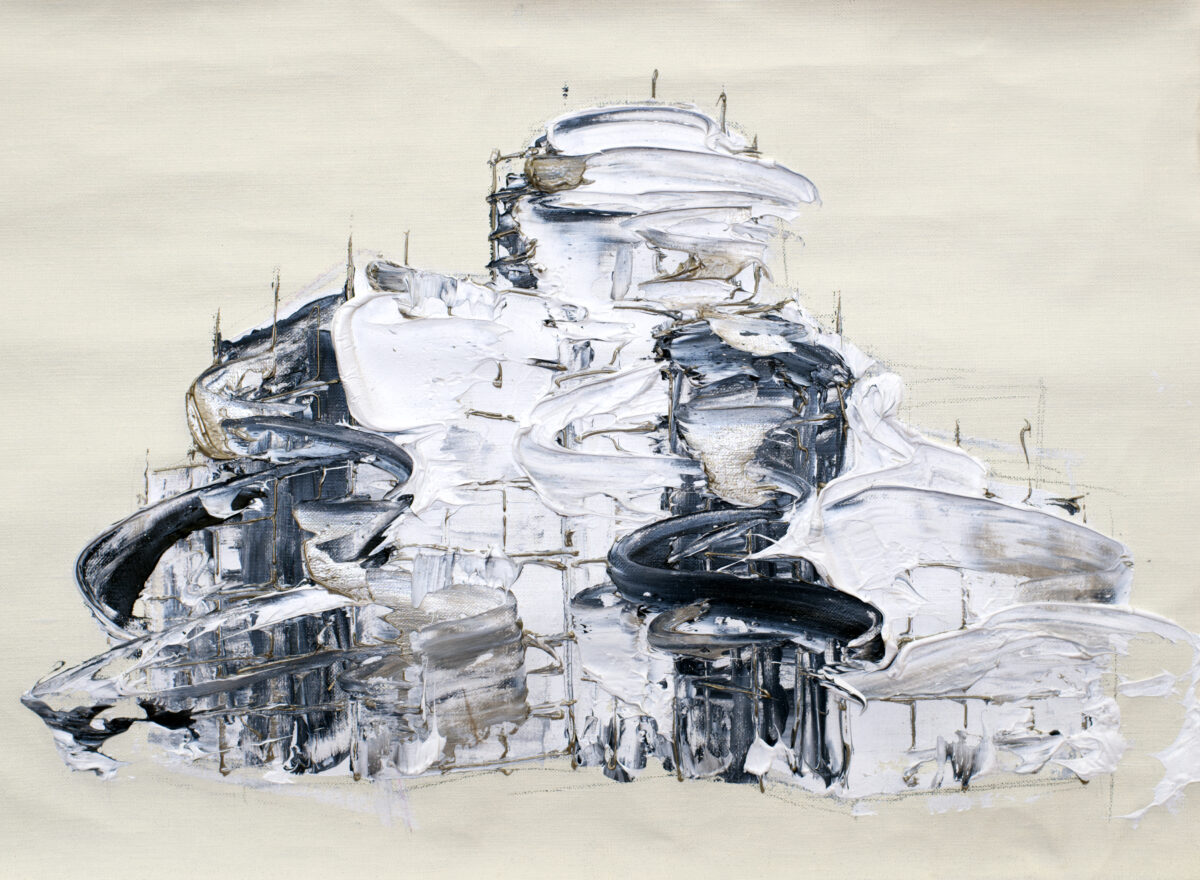
Nishikawa Shigeru, Drawing for Sealed Building: Atomic Bomb Dome, 2024
Nishikawa Shigeru
Sealed Building: Atomic Bomb Dome
For the past few years, my artistic focus has been on buildings in the midst of construction, demolition, or renovation, enveloped in scaffolding and protective sheeting. In present-day Japan, the suburban sprawl of new residential developments and the vertical growth of cities as high-rise buildings sprout upward raise questions about the limits of urban expansion, both horizontal and vertical.
However, every building constructed will one day be torn down. The sheeting enfolding these structures during construction or demolition signify the way we forget what once stood on a site, and for the threshold between vanished and newly emergent memories. What do people choose to discard and forget in the present, see in the present, and pursue in the future? Beyond these temporary barriers are changing landscapes and an evolving society, as the present is replaced by the future.
The Atomic Bomb Dome, the motif of my work in this exhibition, differs from ordinary buildings in that it even with age and degradation, it is not demolished but preserved. It is a structure laden with horrifying memories, which it carries from generation to generation. On that day in 1945, the area around it was instantly flattened and transformed into a wasteland. From then to now, the city with the Atomic Bomb Dome at its center has been undergoing continuous renewal. My aim is to capture and preserve the essence of this scenery, which will surely endure into the future. And I envision a future in which the Atomic Bomb Dome has fulfilled its purpose, and without renewal or renovation, returns to the earth and makes way for something new.
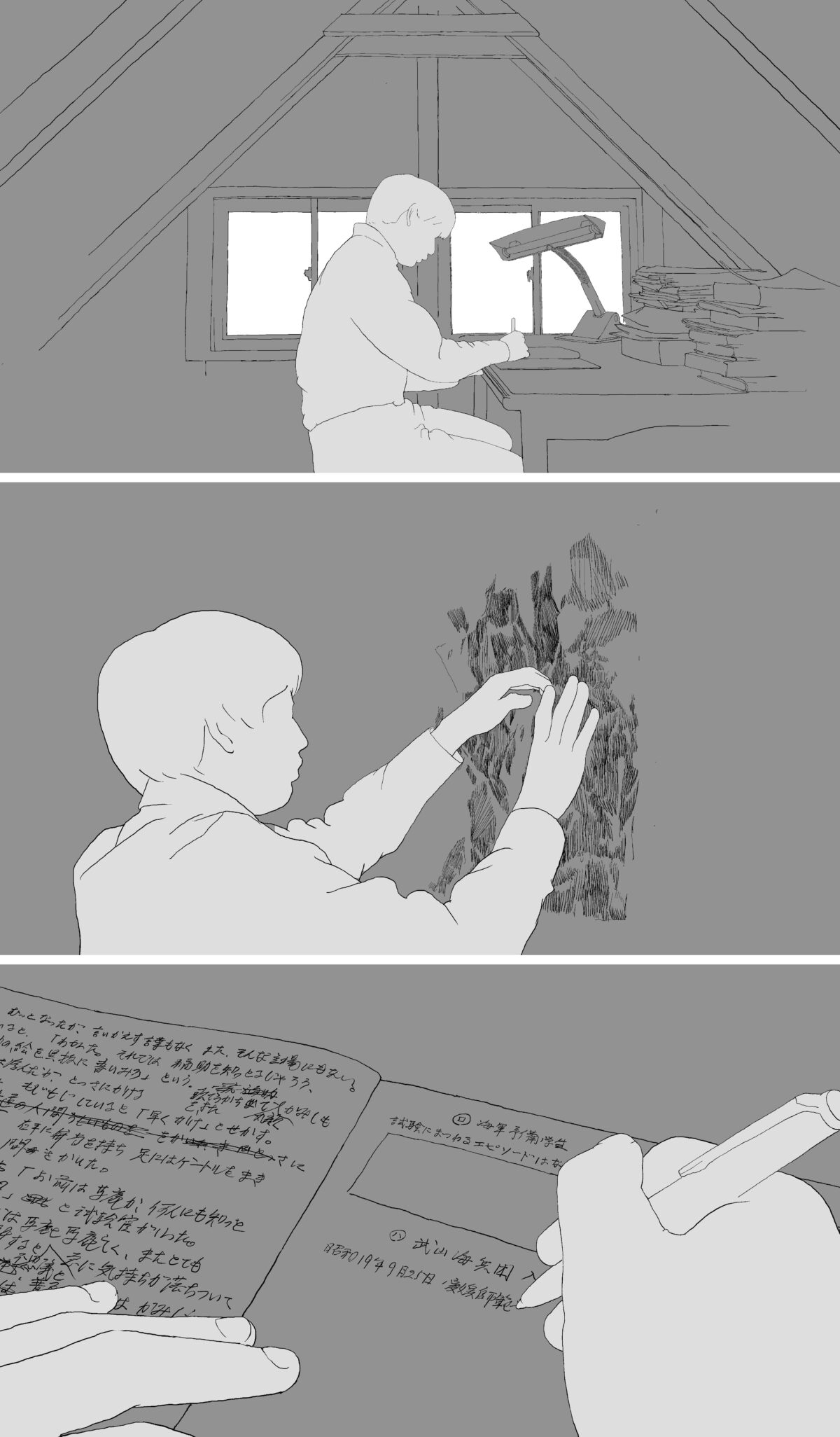
Hirai Koki, with grandfather's hand, 2023 [reference work]
Hirai Koki
The City as Inkwell: Hiroshima / Kure Hiroshima MoCA Award / Special Jury Award
This video explores the historical and scenic contrasts between the cities of Hiroshima and Kure. In August 2018, due to the summer’s disastrous heavy rainfall, when I returned from Tokyo to Kure I found the Kure Line out of service, leading me to take the ferry from Ujina Port to Kure Port for the first time. Seeing a panoramic view of the area between Hiroshima and Kure from the sea was a novel experience, and I was profoundly impressed at the sight of both of these cities I had traveled between so many times, yet never beheld together.
Eventually I came to see the scenery of my home region, which I had unconsciously internalized, as a form of collective expression. I recognized, as if recovering a memory, the distinct ways Hiroshima and Kure developed into modern cities, their different paths as army and navy towns, and the disparities in nuance when the word “peace” was used during postwar reconstruction, resulting in a divergence in landscape that was not merely geographic.
These insights, like resurfaced memories, led me to idea that the hazy silhouette of old-time Hiroshima could be seen in the scenery of Kure, and inspired my work. In this piece, I repeated the process of tracing familiar landscapes, with the goal of opening a new horizon that reconnects these two cities, simultaneously so close and so far apart.
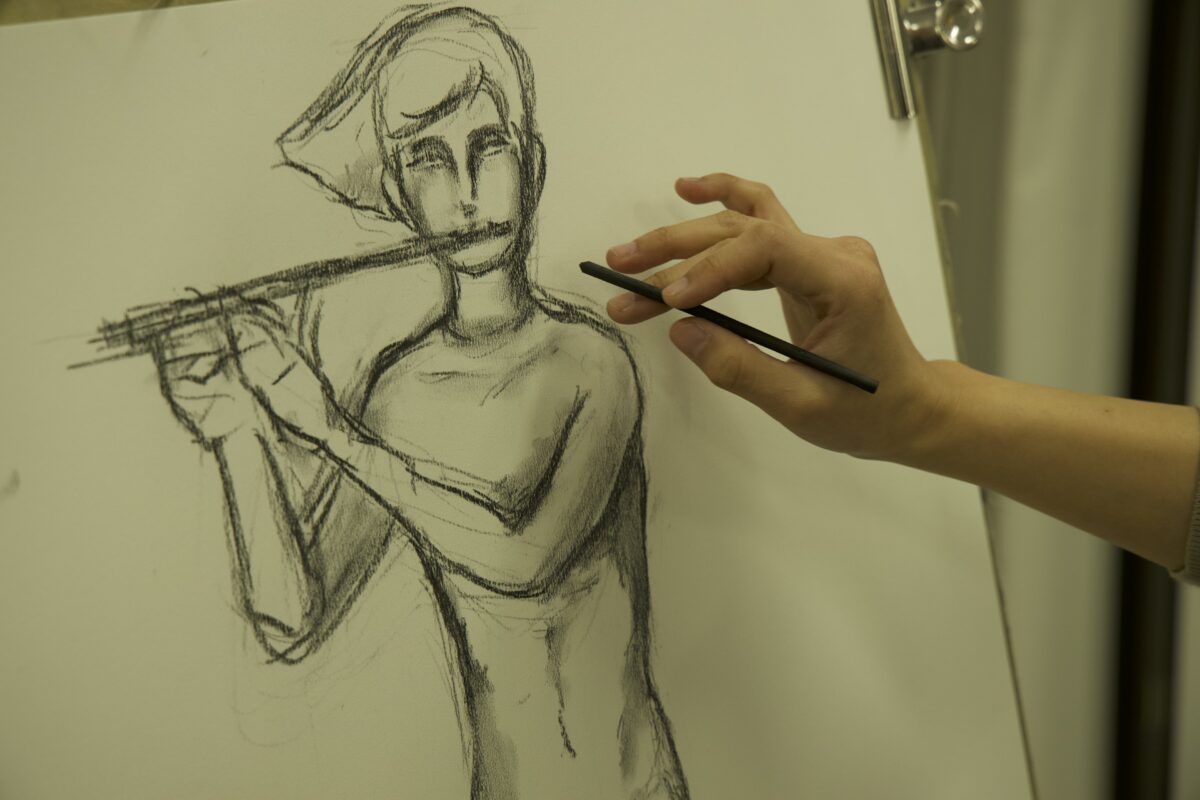
Hozumi Eri, To Capture and Preserve, 2024
Hozumi Eri
To Capture and Preserve
The sculpture Pastorale by Funakoshi Yasutake (1912-2002) was once mounted on a wall at the south entrance of Hiroshima Station. During the reconstruction of the Hiroshima Station building now underway, it was revealed that the sculpture no longer survives.
In an interview with the company overseeing the station’s redevelopment, I learned things that contradicted a 2023 newspaper article I read. I was informed that “the sculpture, installed in 1965, was removed during a total renovation of the station’s south entrance in 1999, and its whereabouts have since been unknown.”
I was raised in Hiroshima Prefecture, but Hiroshima City was far away, and I had never seen Pastorale in person. However, as sculpture is my chosen art medium, I could not regard this event as unrelated to me. I have the same feeling I get when I hear of distant disasters or wars on the news.
I felt that the more Hiroshima Station is renovated and transformed, the further the memory of Pastorale recedes into the distance. This work is my attempt at a symbolic reinstallation of the sculpture, to preserve its memory for myself and for the city of Hiroshima.
Hiroshima MoCA FIVE 23/24 is the first public open-call exhibition held by the Hiroshima City Museum of Contemporary Art since its reopening following renovations. Of the five artists selected from among 326 applicants, it is apparently a coincidence that four have connections to Hiroshima. Upon hearing their life stories, however, it seems less coincidental than inevitable. The atomic bombing, a historical event that intersects with the artists’ lives to varying extents, has fostered an environment that one imagines is fertile ground for creative expression, with individuals’ unique personal experiences expanding to connect to universal themes.
The exhibition’s theme of renewal, also explored in Hiroshima MoCA’s special reopening exhibition
Before / After, covers wide critical territory, encompassing various moments of revival and restarting in the course of people’s lives, reconfiguration of concepts of time, reconstruction from the devastation of the atomic bomb, reassessment of existing frameworks including that of modernity, and visions for the future. Among the diverse entries dealing with various issues, the work of Hirai Koki, who won both the Hiroshima City Museum of Contemporary Art Award and the Special Jury Award, exerts a tranquil presence yet has a dynamic impact with its maximal broadening of the exhibition theme’s critical scope. His evenly weighted hand-drawn lines guide us toward reflection on transport and movement, the relationship between Hiroshima and the nearby city of Kure, the differences in their development as military centers, and the structures of modernity that have fostered further disparities between the two cities.
Tsugawa Nana’s work addresses the issue of emigrants from Hiroshima. While depicting their fresh starts in new lands, she skillfully adapts her earlier drawings to themes that have subsequently emerged, presenting “new landscapes” that take on even more compelling authenticity. Nishikawa Shigeru’s painting makes a powerful and lasting impression, using the Atomic Bomb Dome, currently under renovation, to symbolize a point in time where past and present, destruction and reconstruction converge. Hozumi Eri’s heartfelt work invokes the memory of a sculpture once installed at Hiroshima Station but lost in the maelstrom of urban development, with the artist’s own hand bearing witness to art’s transcendence of time and the material world. Urakami Mana breathes new life into antique photographs found at flea markets, infusing freshness into a medium frequently associated with the dead through her innovative selection and presentation of photographs resembling memories slipping through the cracks of time.
All of the works of these artists demonstrate powerful resistance against time’s irreversible flow toward destruction and death, and collectively, they form a truly outstanding group exhibition. While resonating with various events unfolding in our world today, the exhibition delivers an experience that reaffirms contemporary art’s power to improve our lives, and ultimately, to provoke thoughtful exploration that can prevent the tragic recurrence of war.
Yabumae Tomoko (Curator, Museum of Contemporary Art Tokyo)






